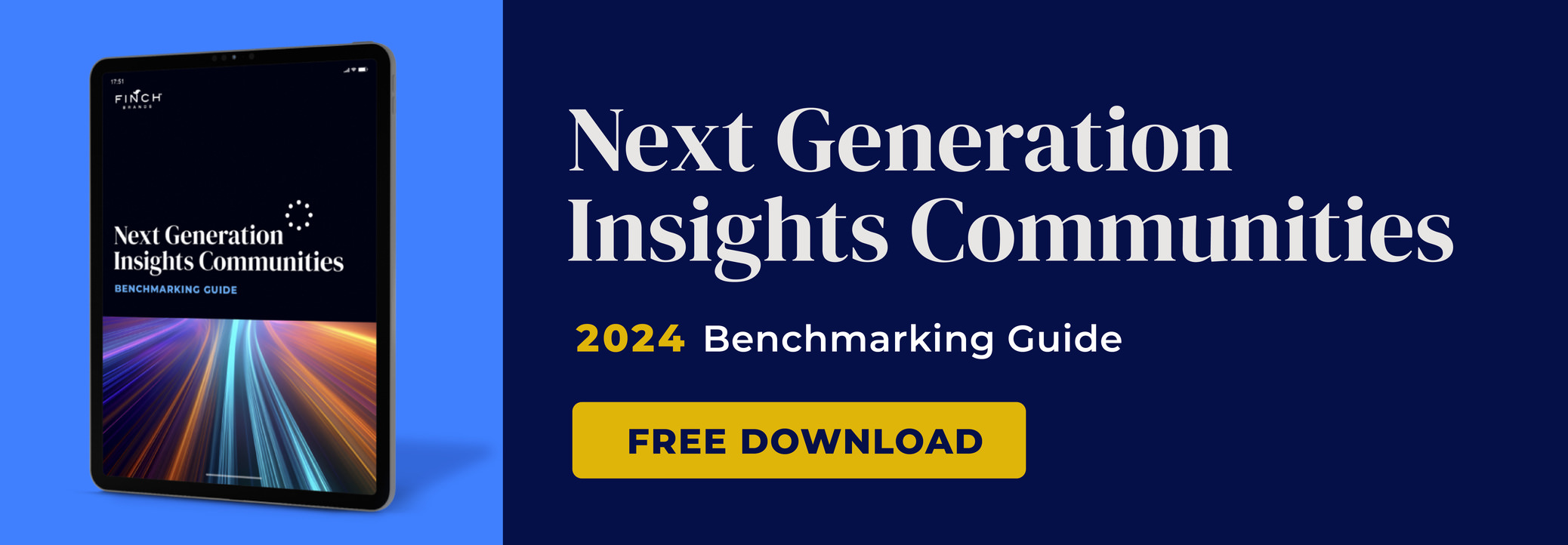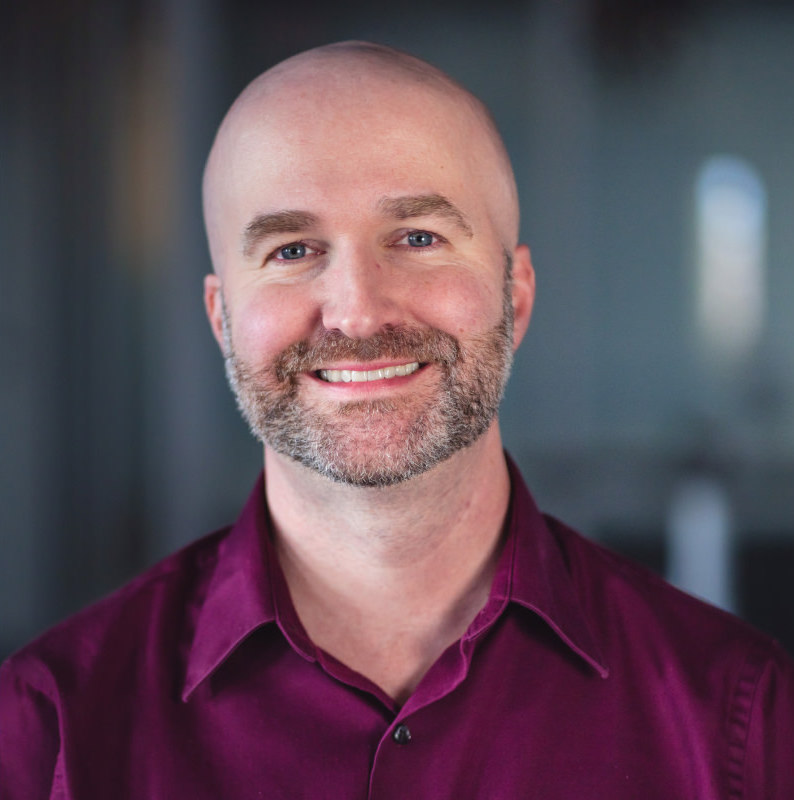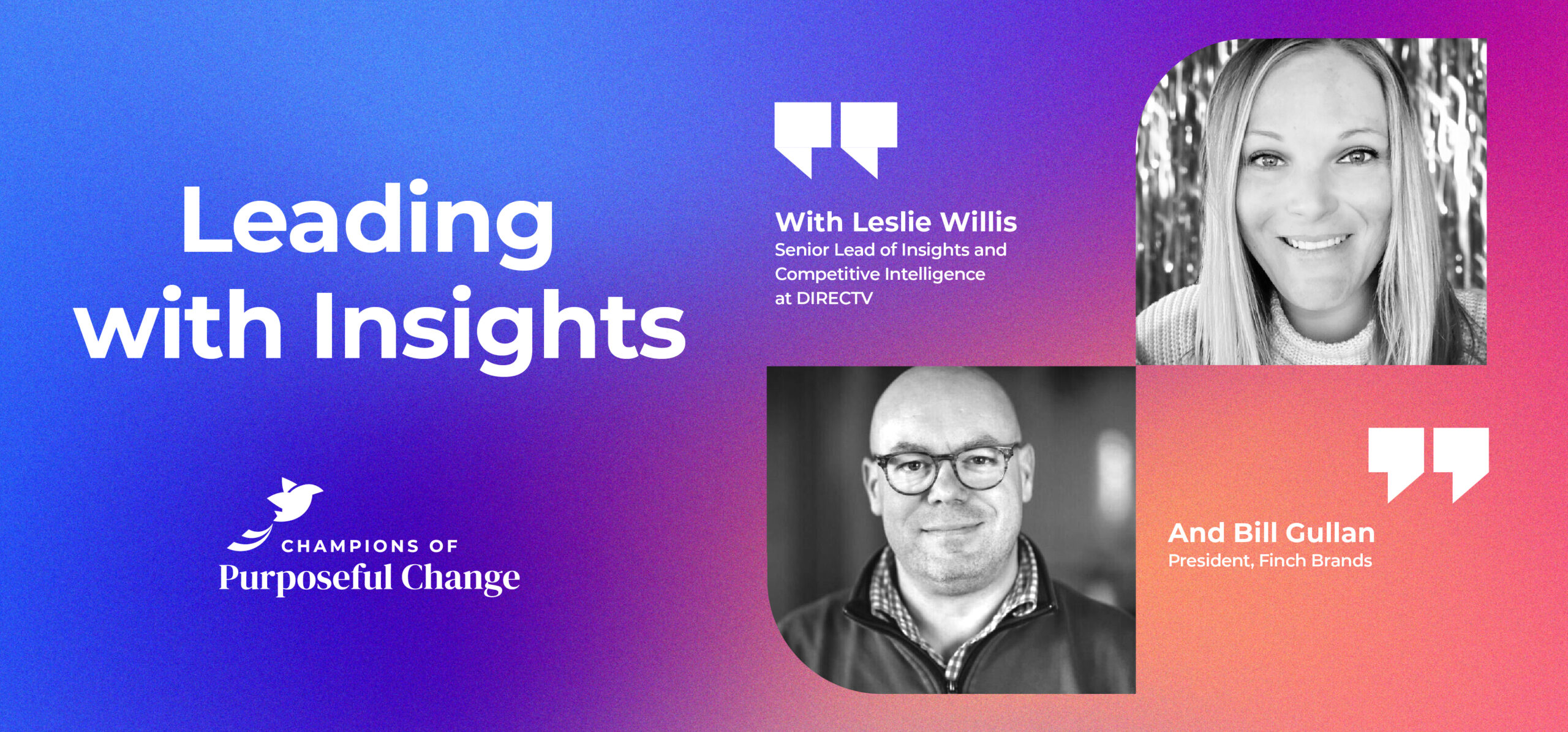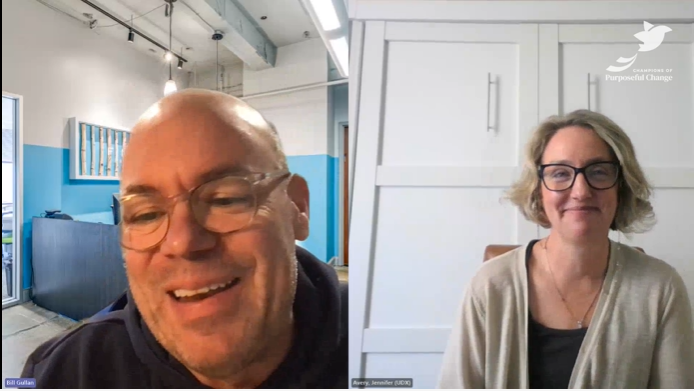One Big Idea: The Keys to Successful Insights Communities
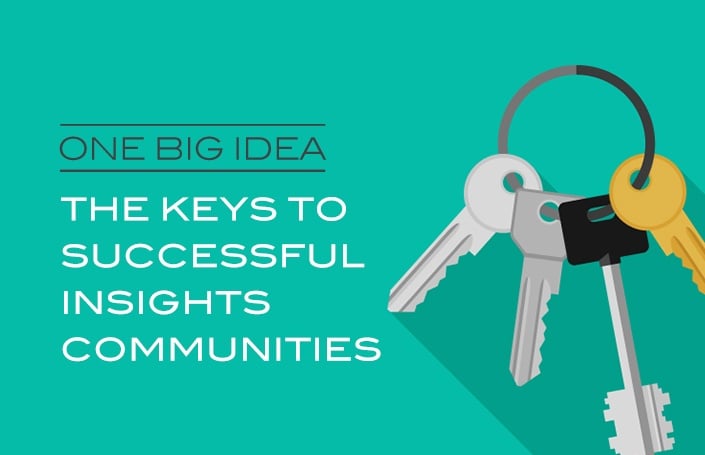
Whether your looking to inform brand positioning, product mix, pricing, specific ad copy testing, trend tracking, or staying in tune with how the marketplace is changing, insights communities are a key tool for brands and consumer insights departments. This week, we host John Ferreira and Tom Finkle who share their perspectives on the changing pace of market research and the keys to a successful research community. If you like our podcast, please subscribe and leave us a rating!
Podcast: Play in new window | Download Subscribe: iTunes | RSS
Transcription:
Bill Gullan: Greetings one and all. This is Real-World Branding. I’m Bill Gullan, president of Finch Brands, a premiere boutique branding agency. Thank you for returning. This is part two of our discussion of insights communities, that is a theme for us this month. These discussions are supported by a blog post, we’ve written a couple of blog posts actually. These two episodes of the podcast, there’s a white paper on our site, there’s a lot of people over here excited to talk about insights communities.
We’ve been spending a decent amount of time assessing this marketplace and building our offering, which we call FinchSight, as a way of helping our clients make more efficient and powerful their market research program. We have with us Tom Finkle, who’s the chief innovation officer from last week. Talked a little bit about his background, he’s back. John Ferreira is also back. John is senior vice president and general manager here at Finch Brands. He was a guest on at least one earlier podcast episode, and we’re glad to have you back Johnny Smooth.
John Ferreira: It’s good to be back.
Bill: Refresh our audience’s memory if you don’t mind a little bit about your background before coming to Finch Brands, because we’re going to spend some time there I think, and in your role on what our industry calls the ‘client side,’ how you used communities, what worked and what didn’t.
John: Sure. Prior to Finch Brands I spent over 11 years at Campbell Soup Company, largely in brand management, as well as in consumer insights. Worked across a wide array of brands and their portfolio over the years, Chunky Soup to Swanson Broth, to Prego Italian Sauce, all their premium soups, so almost the whole portfolio at one point or another.
Bill: Right, terrific. I know that you, as well as Lauren Collier, who’s our VP of brand and marketing strategy and came to Finch Brands, at least her longest career tenure, was a decade at Kimberly-Clark. You both have been actual consumers of research communities along the way. Could you take us through the experience that you had at Campbell’s? What led to the implementation of a community, and then a little bit about the functional expectations and how it went? Then we’ll do pros and cons.
John: Sure. Insights communities I think map well to a lot of the macro-trends that are going on within brand business, as well as consumer insights departments. You’re looking for faster solutions that are more flexible and are also more efficient in terms of your spend. Consumer insights communities, customer insights communities, I think check all those boxes pretty well. Most of the leading solutions out there are able to deliver on those promises. For Campbell’s, there is, as you can imagine, across a portfolio that size that caters to so many different segments across the country, an infinite number of questions that we would want to answer.
Whether it was from the realm of informing brand positioning, product mix, pricing, specific ad copy testing, trend tracking, staying in tune with how the marketplace is changing – questions big, questions small. Often times insight communities were a great way to wrap around larger more expensive studies, where you would have a great piece of research but it didn’t provide everything you needed. So then you could drill down and surround that landmark piece of research by getting into, how do you translate that into action? So lots of different ways that we would rely on insights communities to keep that stream of insights coming.
Traditional research, I’ve always viewed it as you taking a photo. That is somewhat close to the truth, research is imperfect but it gets you close to the truth, and it’s true for that point in time. Then the world keeps changing around it. So what’s different is this is more like a movie, you can see the picture move from frame to frame and evolve as the marketplace does. We got value from insights communities year round.
Bill: That’s great. Bringing Tom in here, and Tom as a reminder is our chief innovation officer and is a pioneer in the community space where he was recently the CEO of a company called Passenger that really was a strong innovator in bringing communities to market. John mentioned, in his words, ‘an infinite number of questions.’ In your experience Tom, are there a couple of functional areas or streams for which communities are particularly well geared?
Tom Finkle: Yeah, absolutely. As we’ve discussed previously, and it ended our first podcast, there’s some real benefits to communities in terms of the opportunity to give consumers the ability to collaborate and really provide deep learning about the issues under investigation. The community’s ability to be agile, i.e. quick, responsive to the needs of internal stakeholders, and in terms of answering questions that come up in the business environment that are important to the company. Those benefits are really useful in really two key areas in our view.
One is innovation. In that sense, innovation is really dependent upon people coming together and creatively influencing each other and really providing great ideas as a result. The collaboration benefit leads to great innovation results that come out of the community.
The second area is customer experience. There, the speed with which answers can be obtained about corporate reputation, brand image are really critical in managing both the customer experience, perceptions of the customer experience, and in this environment where information moves at light speed across the internet, that’s particularly critical as you’re managing brands today.
Bill: That’s terrific. I know on top of those really core areas, the great thing about innovation it sounds like in terms of a community, is that you can do wide space needs assessment analysis in the form of journals or almost ethnography. Then you can very specifically test concepts. It’s everything from specific stimuli, where you want answers that help you prioritize, to broader, kind of ‘what’s happening in the world’ and then what matters to him or her.
John, in your experience at Campbell’s, and you mentioned a lot of the different uses that you all were hoping the communities could support, could you give your product review as it were of the community experience that you had? I know that the things that went well and the things that could be enhanced were really important to us as we set to building our own community model, but how did it go?
John: Yeah, on the whole I think insights communities and most of the leading providers provide a very valuable service. I think that there definitely are some areas in my specific experience that probably could have been stronger in the way that those offerings were designed.
Number one, a lot of the legacy players out there built their models around pretty small sample sizes. In my case, and this was early in the days of insights communities, but it continues on today. A lot of these communities get sold into large companies and it’s only several hundred people that you’re talking to.
Before long, that becomes kind of a fish bowl, and the people within the community become less and less representative of the people outside the community that you’re trying to have that as sort of a lens into their lives. So, sample size of several hundred, over time, some of our respondents almost became like professional researchers. You knew them by them and you could almost predict what they were going to say, so not ideal in the world of insights communities if your sample sizes are restricted like that.
Then, another of the challenges is I think a challenge of marketing research in general, the way your research is only as good as the output that you’re getting. If you have fairly junior staff on it that’s doing the thinking around what’s going into the community, in terms of stimuli and what questions are you asking and how are you asking them, things like that can make a big difference in terms of what you end up learning.
Then on the output, on the reporting side, a lot of these players in different research companies, within communities and outside of communities, they’re really just playing back the facts. They’re not giving you the big ideas. They’re not connecting the dots. They don’t either take the time, or have the ability to really wrap their heads around your business, and there’s no integration with any other research that is done outside of the community. It’s very transactional, and then it’s up to those inside the organization, whether they be brand managers or insights people, to do that higher level thinking.
A lot of organizations are equipped to do that and some aren’t, and some are but they don’t have the time to do it. I think having more seasoned people at the helm of the community, that really understand your business and your brands and your customers, and they’re connecting the dots, not only within any individual study but across studies, is immensely valuable, and it’s rare and it’s hard to find. I think getting those pieces right can make the tool that much more powerful and have a bigger impact on the business.
Bill: Right, so it sounds like you had a mixed experience that leaves you still extremely jazzed about the potential of communities to turn a market research string of projects into an actual program of continuous and aggregating knowledge. But some of the elements of its execution seem to have fallen short in your estimation.
Given that experience, Tom, and some of the other conversations that we had leading into our own development of our own product, FinchSight research communities, what’s our collective response to some of the things that fell short in John’s usage of this in his time at Campbell’s?
Tom: Okay, let me pick up on some of the pain points that you, John, mentioned when you were a buyer of communities at Campbell’s. The way I’d like to address this is by referencing a couple of case studies which demonstrate how we managed to address the difficulties that you experienced while on the client side.
The first case study involves a client who was in the OTC space and wanted to focus on the health and wellness market. They wanted to launch a new line of vitamins that would roll out based on the identification of consumer needs in this area. They setup a community which was comprised of the target groups for the product.
Then, as I mentioned before, using the iterative learning benefits that communities provide, members generated new ideas using ideation sessions, which were then iteratively refined based on subsequent rounds of research. The process was repeated for the first set of vitamins that they launched. The key thing that we brought to the table was the community management team. Because it was staffed with innovation and category experts, who were able to interpret the results and provide go/no-go guidance for each new product idea at each step of the innovation process, and in so doing I think addressed the issue that you mentioned John, which is the ability to turn data into business guidance.
As a result, the line of new vitamin products that came out of the community effort was extraordinarily successful in both initial sales and then getting shelf space in the large pharmacy chains. This was really a good example of the importance of having managers who work on the program, who work on the community, who understand how to use communities.
It’s really two things, understanding how to use communities, and understanding the category under investigation. Then again, by leveraging these skills, we were able to drive data from the community and turn those insights into successful innovation and business decisions.
There’s another case study which I’m going to come on to, which deals with the pain point that you mentioned around having robust sample sizes. That’s important because as you know having big sample sizes, surveying relevant subgroups allows you to slice and dice the audience to better understand consumer attitudes and behavior.
As we know and as I mentioned, over the last 10 years, consumers have increasingly used social media to vent their frustration at brands. This case study is all about how one company dealt with that issue and leveraged communities with its benefit of large sample sizes to really understand how to manage that situation.
In this example, a travel client had had a number of bad customer service incidents that became public. This is not that unusual lately, as we all know. In almost each case the company responded poorly to the events from a PR standpoint. So they decided to form a community that included key groups within their customer base, which were business travelers, and to some extent those travelers who are consumers and are just going for a vacation. The community’s 24/7 availability provided the client’s voice of customer staff with a tool to continuously and instantaneously monitor consumer opinion when a bad event took place.
Also, importantly, communities provided the capability to test different response strategies quickly against different target audiences. That’s what this large sample size allowed for. So when the next crisis hit, discussions and surveys were implemented in the community to assess reputational damage among this client’s key target groups, and importantly, learning was obtained by group, because the size of these samples was large enough to permit assessment of perceptions within each target and also the testing of response strategies.
A great example of how a large community with sufficient sample size can allow clients to manage their corporate reputation, where that reputation is dependent upon multiple subgroups in their market, very effectively.
Bill: Right, thanks Tom. Those are examples from Tom’s past, where he created community structures and managed them against specific objectives in a way that sounds like John, if you’d had access to that level of thinking your experience may have been not a B minus or a C plus but hopefully up the grade scale.
John: Yeah, totally agree. I think that addresses some of the key pain points. One of the others that didn’t exist at the time, but I think has evolved in the marketplace, is a lot of even the leading providers, really big names that you would know and recognize and companies throw a tremendous amount of money at, they don’t have tools that are fully contemporary and flexible for today’s mobile research environment.
Things like capturing video in efficient user friendly, productive ways, and being able to port that into the community for things like virtual ethnography or shop-alongs or virtual visitations into consumers’ homes. Even capturing stills from mobile devices, or even just taking the research and taking surveys on those mobile devices, believe it or not, 2017 some of the leading providers out there, it’s not user friendly.
I think those factors are serious limitations, where people’s lives have shifted much toward the direction of mobile, and if you want to stay in tune with how they’re living and get really high quality research and being able to do cutting edge things, staying in tune quickly with them, you need those mobile capabilities today.
Bill: Absolutely. Especially if you’re dealing with clients whose products are distributed in retail or where the environment has a lot to do with how one sees it. We’re not going to go over the edge here in terms of time, but I know that you guys worked a lot on assessing John’s experience, as well as that of others that we’ve spoken to, both inside and outside Finch Brands.
As we built the FinchSight business model here, we wrote a white paper that is available at finchbrands.com that really has a strong case for why insights communities as a structure is very much of the moment, as well as compiling a couple of very practical best practice tips for organizations that are considering implementing one of these or progressing one they already have implemented. Those tips I think came out of some of these types of conversations, yes?
Tom: Yeah, absolutely. I think the collaboration that we’ve had here at Finch between market research professionals, like myself, who’ve spent a long share of my career on the agency side with guys like John, who’s been a client guy for most of his career, have really together produced a winning product.
Bill: Charm and goods looks as well, which is not easy to find to this degree anywhere in the marketplace. As we went through this, I know there’s five specific areas among others where we really focused on building a differentiable product experience, as you mentioned, both of you guys mentioned earlier. Some firms in the space are really focused on being technology companies, and it’s really about the tool, and then it’s left to a client device or to a very junior person to operate it and make sense of it.
For us at Finch, we are a brand consultancy and we’ve built our communities model around what you said Tom, which is wringing genuine business insight out of all the data that a community like this creates. To your point John, flexibility and size in terms of the panel can be a constraint, if, ‘Oh, there’s Doris again, saying exactly what we would expect her to say,’ because she’s one of the people who always speaks up.
I think our preference is to build communities in the thousands and to be smart about segmentation so that we can get qualitative and quantitative readable samples on this and not have an element of fatigue or anything else interfere with the data that we collect. I know Tom one of the important things to you is replenishing those who attrite on a quarterly basis and engaging the community in a way where they understand their value. That creates a continuation of the cycle, they view themselves as consultants much more than independent survey takers who are trying to get the five bucks or the five points, which is the case somewhere in market research.
From a partnership style perspective, I know we spend a lot of time thinking how best to create a workflow where client input is essential and important, but also not too onerous. Where part of the point I think for our clients, who are busy folks, is for their insights programs to be made more efficient by the implementation of communities, not less efficient.
I know we’ve been focusing a lot of bringing project management and community engagement through insights and brand people, having a dedicated point of contact, using client input and taking as much management responsibility as we possibly can. They can get as deep as they want to, our clients can, but I also know in terms of reporting, to John’s point, some communities may deliver data without confidence or context, but we think that’s a towering and fundamental strength of what we’ve always done at Finch Brands, and so we bring it into the community process.
And then, from a value perspective, John as you mentioned, the big players so-to-speak in the community realm have been big companies, pitching big companies, whereas what we’ve built here we’d like to think at least, I guess we have to prove it but we’d like to think, is about an investment that’s right sized for the middle market.
Any closing thoughts from either of you guys, or both of you guys, maybe in unison or inverse, as to what we created and why and how it may progress this discipline in a way that, Tom your career’s led up to, or John your experience has led up to?
Tom: Yeah, I would just pick up on one point that you made Bill, and that’s the notion of a full-service agency in the community space is both unique and I think really important. I define full service as providing the technology platform, which really is the foundation for everything that we do because it provides the ability to engage members and perform all manner of market research. But that’s only the beginning, what Finch Brands does I think really well, is provide that added layer of consultation on top of the data that comes out of communities. Which as we discussed is really terrific. The notion of working with a one stop shop, where both of those kinds of capabilities are provided I think is really critical in today’s environment.
Bill: Right.
John: Building off of my own experience, for better and for worse, as well as other senior executives that we’ve met with and talked about who have communities today, what we’ve attempted to do is address those pain points. Sample sizes that are larger, staffing that’s better, reporting that’s richer and a business impact that’s greater.
Whether you have an existing solution and you’re not entirely happy with it today, or maybe you don’t have an insights community and you’re in tune with where the market is headed, and you want to make sure that the voice of your customer or your prospect is really integrated into the decisions you’re making, would love to chat. So, send us an email, pick up the phone, and let’s talk shop.
Bill: Indeed. Any one stop shop that includes the two of you and people like you is going to be a very productive stop indeed. Tom Finkle, John Ferreira, thank you for your time, your insight, the benefit of your experience and all the hard work you guys do every single day here at Finch Brands, both the two of you and the teams that you manage. Grateful for your input.
Tom: Thank you.
Bill: That’s what we got here on Real-World Branding today. Three ways always to support what we’re doing. We’d appreciate as always a rating if we deserve it. We’d love it for it to be five stars, that helps our content be found by others in the app store of your choice. We certainly love comments and feedback through Twitter, through Facebook, through other social channels, through email, through phone. We love this dialog about what we do, how it impacts our dear listeners as they surmount the tasks that are in front of them within their professional lives and as their careers grow.
Then, specifically related to community as noted at the very outset, we have built a whole range of content tools that are designed to be of value to those who are interested in or engaged in insights communities in terms of helping have them as a resource to progress brands and businesses. We’ve built a white paper that’s available at finchbrands.com for download. We’ve built a series of blog posts that go into greater detail than what we could ever possibly do in a quick chat like this. We have these two podcast episodes that are designed to be both philosophical and practical. Then of course, as John mentioned, we are here and excited to talk about this. It’s big news for us and we’re thrilled by its ability to help activate the full potential of client businesses and brands. On that note and in that spirit, we’ll sign off from the cradle of liberty.
